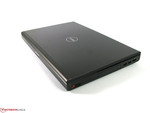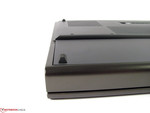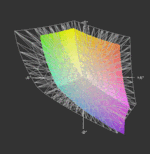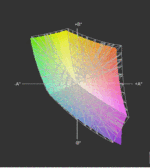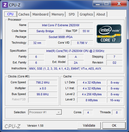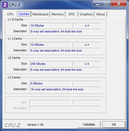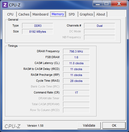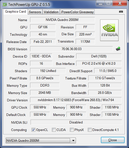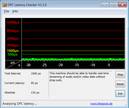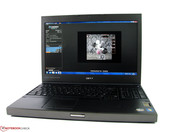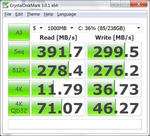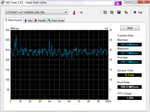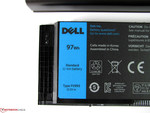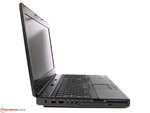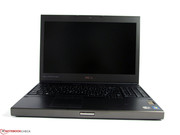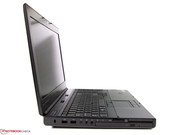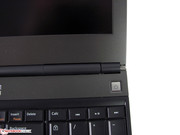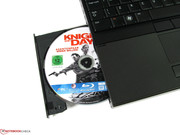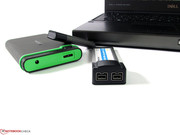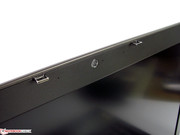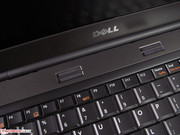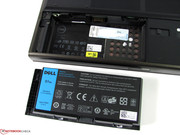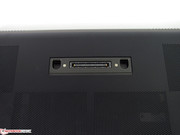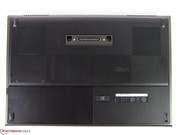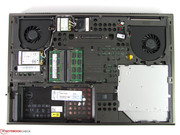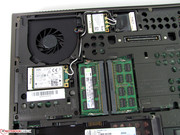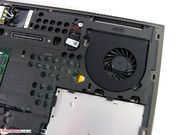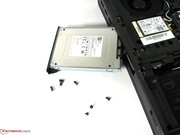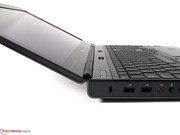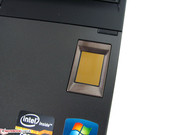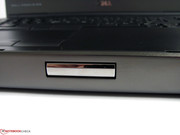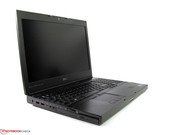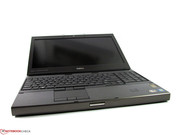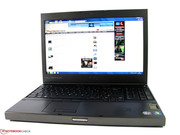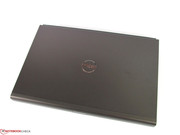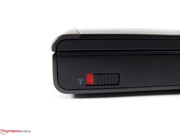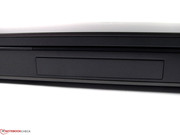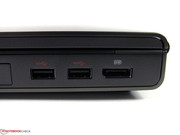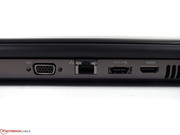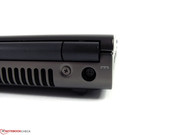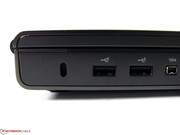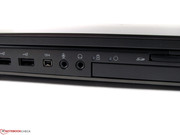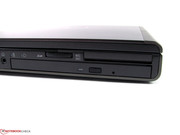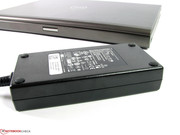Review Dell Precision M4600 Notebook

Workstations are viewed by many users as the elite class of mobile notebooks, since they possess high performance reserves and good features, as well as satisfying other aspects such as upgradability, reliability and compatibility, to a certain extent. A long availability of replacement parts, guaranteed software compatibility, generous warranty periods, and support services are also provided by the manufacturers, even if at a nice premium though. It should therefore come as no surprise that the basic version already costs in excess of 1000 Euros after tax.
Alone the configuration possibilities in the Dell online shop are already surprisingly elaborate, and cover a large number of individual requirements. Six different dual-core and quad-core CPUs, four displays, and three graphics cards are available for selection. With a slightly adjusted configuration the 2000 Euro mark can quickly be reached, especially since even smaller features such as a webcam and a backlit keyboard require an additional expense. More affordable and better equipped models are partially preconfigured, and are available from various online retailers. Our reviewed model represents one of the higher performance configurations, and provides an Intel Core i7-2920XM CPU, Nvidia Quadro 2000M graphics, 256 GB Solid State Drive, Blu-ray, Full HD display, and much more which we will elaborate on in this review. The price however already lies at over 3000 Euros after tax, and underscores the premium demands associated with it.
Case
The case, as has already been mentioned, has been completely renewed and doesn't have anything in common with the predecessor model Precision M4500, with the exception of many good features. What stands out is the metallic exterior with an unusual umber brown color scheme. The adopted materials altogether make a robust and high quality impression, although the work area surfaces are made of plastic. There aren't any shortcomings in this area though. The palm resting area is firm, the gaps are even, and the surface feels pleasant. The same is true to a similar extent for the display lid, which can be warped a little with some force, but also makes a very robust impression. The back of the lid can be dented a little, but changes on the display are not generated as a result. The display hinges are more rigid than usual, and can be operated in both directions with one hand. The battery integrated into the front also assists in this case, since it provides for the necessary counterweight under the palm resting area.
However, the battery is also responsible for the first real point of criticism, since this sits relatively loosely in the case, and in addition contains one of the four feet. If the battery is removed the case is no longer stable and dips down towards the front right. Otherwise the base unit is very firm due to the omission of any maintenance panels. This has the disadvantage though that the whole base plate or the keyboard have to be removed in order to exchange or upgrade components. To reach the mass storage for example seven screws have to be removed. There is no exchange shaft for quick swapping of drives. We also found the rigid power cable which stands out towards the back unpractical, since this always necessitates a certain gap at the back of the notebook.
The measured weight of our reviewed device is approximately 3.2 kg, which is relatively heavy for a 15" notebook. Other than this the dimensions of 376 (W) x 256 (D) x 36.5 (H) mm also exceed the usual by several millimeters. The bulky overall impression is however created by the omission of curved surfaces on the case, which at least provide for an optically slim impression on many competitor models.
Connectivity
Following on from the good case Dell has created another highlight when in comes to the connectivity. In this case almost everything that could be required is available: USB 2.0, USB 3.0, eSATA and FireWire (IEEE 1394, 4-pole without power supply) cover the usual PC spectrum completely. Merely FireWire 800 and Thunderbolt could be added for the sake of completeness, both are so far meaningless for Windows notebooks though, and therefore also not available from competitors either. For additional interfaces or peripheral devices there is also an ExpressCard/54 slot available, which is above all else practical for extensions that aren't always required.
Always on board are three possibilities for connecting external monitors: An analog VGA connector, which is primarily found on older displays, as well as two digital alternatives in the form of HDMI and DisplayPort.
Otherwise there is also a smart card reader, an SD card reader, a 2.1 MP webcam, Gigabit LAN, and of course also a Kensington Lock socket. Our optical drive is made by Matshita, and can read and write the usual disc formats as well as Blu-ray discs. We also like the separate provision of audio ports, which makes the use of headsets with mini jacks possible among other things.
The distribution of the interfaces has been thoroughly successful. The interfaces at the back may be slightly difficult to reach, but at least the connected cables don't get in the way and provide for a tidy desk. The same is true for the ports on the sides, which are located towards the back.
Communication
Our reviewed device has Bluetooth and WLAN 802.11n integrated. We weren't able to determine the Bluetooth version, presumably this is Bluetooth 3.0 though. The Intel Centrino Ultimate-N 6300 WLAN module has three antenna's, is able to operate in the 2.4 and 5 GHz bands, and can theoretically transfer up to 450 Mbit/s. In addition to this the module is capable of operating over longer distances more reliably. In any case a 3G modem is separately available (Dell Wireless 5550, approx. 170 Euros), and is included in the reviewed device. If this option is selected users will have to forgo an mSATA SSD though, since there is only one socket with the full size available. The webcam required for Skype & Co. has a resolution of 2.1 MP, and is also not included in the basic configuration and costs about an additional 20 Euros.
Security
As usual for business devices, all the security features such as a smart card reader, Trusted Platform Module, fingerprint reader, and different password options are available. In addition Dell offers various backup, data shredder, and restore services for an additional price.
Accessories
The delivery contents are easy to oversee in light of the high acquisition price. These includes the usual Tools, as well as the Blu-ray software from Cyberlink, and Roxios Creator for the optical drive. MS Office is only pre-intalled as a starter version with limited functionality.
The docking solution options are the Simple E (452-10768, approx. 130 Euros) and the Advanced Port Replicator (452-10761, approx. 150 Euros). While the construction of these is more or less identical, the two models distinguish themselves primarily by their interfaces. The 'big' model offers 2x DVI and 2x DisplayPort, both have an eSATA port, and neither provide USB 3.0.
Warranty
As standard there is a 36 months warranty, which can be upgraded/extended with additional further options, and can thus be adapted to personal requirements with relative flexibility.
Input Devices
Keyboard
Our reviewed model is fitted with an English keyboard layout (QWERTY), but otherwise conforms with the usual features. The markings on the keys have a good contrast, and the special functions can be found intuitively. Thanks to the keyboard backlight, which can be set to 5 different levels according to personal taste, it is also possible to write without difficulties in dark ambient lighting conditions.
The end stop of the keys is good and quiet, with a medium key travel, and the keys provide a good pressure point, as well as conforming to the usual standard size. At last Dell has utilized the case width, and has integrated a number pad into the Precision. This makes the entry of elaborate rows of numbers much easier, and provides for a pleasing addition to the features.
With the exception of the left third, the whole keyboard lies firmly and doesn't give way. In the aforementioned area it is already possible to provoke a visible denting with a little pressure. During the test this didn't lead to any limitations though, which is why most frequent typists should also get on well with the input on the Precision.
Touchpad/PointStick
The Touchpad is medium sized, provides a pleasant gliding characteristic, and is well separated from the palm resting area. It supports the usual gestures, and can be individually configured. Those that don't require a Touchpad can also disable this completely.
The alternative of the Touchpad is the control of the cursor with the PointStick, which provides precise control. In this case it is also possible to configure the settings to accommodate personal preferences.
Display
Dell offers four different display variants for the Precision M4600. One is a conventional WXGA display, one a multi-touch capable WXGA display, one a Full HD display, and one a Full HD display with IPS panel and RGB LEDs. Our reviewed device contains the 'normal' Full HD display, which we for instance already came across in the Latitude E6520.
1920x1080 pixels with a diagonal length of 15.6" provide for a lot of room on the desktop, and are enough to keep several program windows open at the same time without them overlapping. This is very comfortable and saves some of the links in the toolbar. Those that find the pixel density of 141 dpi too fine can adjust the resolution to their preference, thus easing the potential strain on the eyes. Those that generally want to reduce the resolution, will be a bit disappointed. The possible resolutions below Full HD are 1280x1024 pixels and lower, and those in between, such as 1600x900 or 1366x768, aren't supported by the display.
| |||||||||||||||||||||||||
Brightness Distribution: 73 %
Center on Battery: 357 cd/m²
Contrast: 603:1 (Black: 0.68 cd/m²)
63.6% AdobeRGB 1998 (Argyll 3D)
91.8% sRGB (Argyll 3D)
61.9% Display P3 (Argyll 3D)
Already when switching on the display for the first time its quality becomes apparent: Due to the brightness and contrast level the difference compared to a standard display is clearly visible. With the maximum brightness setting we measured values between 300 cd/m² and 410 cd/m² at nine points. This is more than enough brightness to be able to work indoors comfortably. Thanks to a matte display surface users can also select more ergonomic settings for brightness, which are usually perceived as pleasant between 140 and 160 cd/m², without causing any concern. The brightness level 5 provides the associated 150 cd/m², whereby brightness level 7 provides a measured value of 200 cd/m².
What is not quite as good is the illumination of the display. The result of 73% is below average, and prevents a better overall display rating. At its peak the difference is as much as 100 cd/m², which can become visible on single colored backgrounds. As can be seen from the measured values, the high illumination at the center tapers off considerably towards the sides. During normal multimedia and office use this is certainly not a problem, but when carrying out demanding tasks such as image editing these discrepancies have to be taken into consideration. Graphic artists and photographers should therefore consider the IPS RGB Full HD display instead, which should at least provide better viewing angle stability and an extended color space.
During outdoor use there are fortunately hardly any limitations thanks to the very high brightness level. Even the reduced maximum brightness of 357 cd/m² during battery powered use trumps most of the competitor displays by far. Merely direct sunlight can cause some problems for the visibility of the displayed images.
The contrast ratio of 602:1 can also be classified as an elevated level. The colors look more saturated, and black and white have noticeably less of a gray component than usual.
The total number of all representable colors is 783626, and thus covers about 94% of the sRGB color space. Compared to more commonly adopted displays, which cover between 50% and 60% of the sRGB colors space, this is makes a significant difference. For many tasks this is sufficient, although for image editing this might nevertheless still not be enough.
The viewing angle stability is better than usual and provides for wide viewing angles. Only when looking at the display from extreme angles in the vertical plane does the picture begin to invert or dim. The images displayed may still be recognizable, but colors, contrast and brightness are extremely altered.
Performance
Our configuration of the Dell Precision M4600 definitely has high performance components. Intel's Core i7-2920XM quad-core CPU is currently the third fastest mobile CPU (see our comprehensive CPU benchmark list), and the Nvidia Quadro 2000M belongs among the most powerful professional graphics chips, which is optimized for use with CAD software. There is therefore no need for concern when it comes to worrying about a lack of performance from this workstation. What is also outstanding are the RAM possibilities: In altogether four sockets the quad-core variants can address up to 32 GB of DDR3 RAM. Models with the dual-core CPU in contrast have to make due with 16 GB. In our reviewed model the two sockets under the base plate are fitted with two 4 GB modules, and both of the slots under the keyboard were empty. There is hence still more than enough room for upgrade potential.
Since the full graphics performance is not always required, the system can use the Intel HD Graphics 3000 graphics core integrated into the processor during times of low graphics load instead of the Quadro-GPU, thanks to Nvidia's Optimus technology. The best graphics processor for the particular task can be chosen either automatically or manually. Optimus can be deactivated in the BIOS, following which only the Nvidia graphics are available. We only tried this briefly, and didn't carry out any performance tests.
The CPU benchmark results provide the expected outstandingly good scores. Cinebench R10 Multi-CPU Rendering for example results in 20651 points, and the wPrime-1024m calculation is completed after 274 seconds. This shows that above all else multi-core applications profit from the high performance of the i7-2920XM CPU. Since the difference compared to the significantly more affordable Intel Core i7-2820QM CPU (Thinkpad W520) is however relatively small, only performance enthusiasts are likely to opt for the variant in our reviewed model.
For the processing of displayed images Dell provides a choice of three dedicated graphics chips: ATI FirePro M5950, Nvidia Quadro 1000M and Nvidia Quadro 2000M. The latter is included in the reviewed model, and represents the most expensive and thus also the most powerful variant. The ATI solution is not compatible with the IPS RGB Full HD display though.
The GPU benchmark results are convincing, and rank more or less between those from an AMD Radeon HD 5850 and Nvidia GTX 460M. 6659 points with 3D Mark Vantage, 1421 points with 3D Mark 11, and 38.44 points with Cinebench R11 OpenGL shading speak for good performance capabilities.
The performance only varies marginally depending on whether the notebook is used with the power connected and the battery attached, or with the power connected without the battery attached. A few points more or less here or there are also scored following successive iterations of benchmarks under identical conditions. A clearly noticeable performance reduction when battery powered becomes apparent when it comes to the graphics performance though. Under these conditions the GPU clock speed reduces to a mere 202 MHz, and provides up to 70% less performance with graphics intensive applications. The setting 'prefer maximum performance' in the Nvidia graphics driver doesn't improve this either. When it comes to the CPU performance we weren't able to detect a similar behavior. In addition there was no CPU throttling during the test. The AC adapter is sufficiently rated, and the good ventilation prevents any potential thermal problems.
| Benchmark/ Test software | Power connected + battery | Power connected without battery | Battery 97 Wh without power connected |
| Cinebench R10 Single CPU | 5567 | 5492 | 5560 |
| Cinebench R10 Multi CPU | 20651 | 20119 | 18829 |
| Cinebench R10 GL | 6788 | 6831 | 5961 |
| Cinebench R11.5 GL | 38.44 | 38.44 | 13.14 |
| Cinebench R11.5 CPU | 5.80 | 5.51 | 5.45 |
| 3D Mark 06 | 11747 | 11750 | 4110 |
| 3D Mark 06 CPU | 6036 | 5958 | 5881 |
| Heaven 2.1 | 14.1 | 14.1 | 4.4 |
| MediaEspresso CUDA | 578 s | 574 s | 995 s |
| MediaEspresso Quick Sync | 219 s | 212 s | 208 s |
| MediaEspresso CPU | 483 s | 481 s | 497 s |
| PCMark Vantage Result | 18751 points | |
| PCMark 7 Score | 4414 points | |
Help | ||
| 3DMark 06 Standard Score | 11747 points | |
| 3DMark Vantage P Result | 6659 points | |
| 3DMark 11 Performance | 1421 points | |
Help | ||
Video Conversion
Thanks to the activated Intel graphics chip the Dell Precision M4600 provides a large selection of conversion possibilities. For pure CPU conversion, Intel's Core i7-2920XM processor may provide a relatively large amount of processing power, but also almost completely utilizes the whole system (89% CPU load). Running other tasks at the same time is only possible within limits. Significantly less system load is required by Intel's Quick Sync technology, or Nvidia's CUDA processors. Many current programs already support one of these GPU conversion options, and reduce the processing load significantly with a simultaneously high performance (11-29%). We tested the Cyberlinks Media Espresso. This program supports all three conversion types, and thus allows for comparisons to be made. We converted a video in the m4v format (698x322) into an iPhone 4 compatible mp4 format (640x360). Quick Sync required the least time for this task (219 s) meanwhile using the same low processor load (about 11%).
CAD Performance
The CAD capabilities were tested by us using the benchmark SPECViewPerf 11. With this different sequences of popular CAD programs are carried out. In this case the combination of the Quadro 2000M and the Intel Core i7-2920XM is able to achieve very good results. The frame rates lie almost on the same level with those from the Lenovo ThinkPad W520 (Quadro 2000M, Core i7-2820QM) and thus provide a good performance in the CAD domain. Special performance drivers, such as for AutoCad or 3ds Max for example, are not available for the Nvidia Quadro 2000M at present. Even more performance is therefore only provided by the bigger 17" workstations, with which even more powerful graphics chips (Quadro 3000M, Quadro 4000M, Quadro 5010M) can be used.
Conventional hard drives are available with a capacity of up to 750 GB, and Solid State Drives with a capacity of up to 256 GB. Available are a conventional hard drive shaft, and an mSATA socket. A second drive is optionally configurable, although one of the mass storage drives has to be an mSATA SSD in this scenario. A second regular hard drive shaft is not available. Conventional hard drives can therefore only be combined with an SSD, and RAID is exclusively possible with mSATA SSD + SSD.
Our reviewed device includes a 256 GB capacity SATA III Solid State Drive made by LiteOn. This provides peak transfer rates of up to 340 MB/s, and a good 240 MB/s on average according to HD Tune. The determined access time of 0.3 ms is relatively long for SSD standards though. In return about 400 MB/s are achieved during sequential reading, and 300 MB/s during writing. The subjective impression of the mass storage device is very fast, and the noise generated during times of utilization is only noticeable faintly in the background. The additional cost in the Dell configuration of 500 Euros seems a little high though, since similarly good SSDs are currently available for about 300 Euros.
Gaming Verdict
The performance capabilities in the gaming area can also be classified as good with the professional graphics provided by the Nvidia Quadro 2000M. Demanding games may not always be playable with the full resolution and/or the best quality, but this is still likely to be sufficient for a quick relaxing game in between. After all a workstation is meant to be used for working. Compatibility problems, which could be a potential problem due to the special Quadro driver didn't emerge during the testing.
| low | med. | high | ultra | |
|---|---|---|---|---|
| Sims 3 (2009) | 269 | 93 | 47.89 | |
| Anno 1404 (2009) | 62 | 36 | ||
| StarCraft 2 (2010) | 243 | 23 |
Emissions
System Noise
One point in particular which speaks in favor of the Dell Precision workstation is the very restrained system noise. Despite high performance components the system noise is very quiet in many application scenarios. The ventilation and cooling concept is a definite success, Nvidia Optimus makes the use of the integrated Intel graphics possible, and the almost silent Solid State Drive forgoes the famous hard drive rattling. Internet, office, many image editing tasks, and average resolution movies utilize the system and thus the cooling system so little, that an almost silent use is possible. Merely a very quiet electronic chirping from the Solid State Drive is then still audible in quiet surroundings.
Under a medium load the system noise reached a moderate 36.6 dB(A), and under a full load at length an annoying 48.2 dB(A). What we especially liked is that the cooling operation is immediately reduced following the end of the utilization period, and then quickly fades away again. Unpleasant cooling system noise or a hectic back and forth of cooling system noise levels are not an issue with the Precision M4600.
Noise level
| Idle |
| 28.6 / 28.6 / 28.6 dB(A) |
| DVD |
| 38.2 / dB(A) |
| Load |
| 36.6 / 48.2 dB(A) |
 | ||
30 dB silent 40 dB(A) audible 50 dB(A) loud |
||
min: | ||
Temperature
The maximum temperature of 49.7 °C on the base plate of the case of the workstation after one hour of full load may be a little warm, but this won't cause concern on a desk. Depending on the requirements it is possible to use preconfigured power plans from Dell, which provide for an especially cool case (clock speed reduction to maximum 1.8 GHz) or Ultra Performance (maximum cooling level). As already previously mentioned in the section on performance, there was no thermal throttling at any point detected by us. When carrying out tasks with little load the temperatures with a maximum of 33.8 °C are significantly lower, and even allow for using the notebook on the lap.
(±) The maximum temperature on the upper side is 42.3 °C / 108 F, compared to the average of 38.2 °C / 101 F, ranging from 22.2 to 69.8 °C for the class Workstation.
(-) The bottom heats up to a maximum of 49.7 °C / 121 F, compared to the average of 41.2 °C / 106 F
(+) In idle usage, the average temperature for the upper side is 29.1 °C / 84 F, compared to the device average of 32 °C / 90 F.
(+) The palmrests and touchpad are cooler than skin temperature with a maximum of 31.6 °C / 88.9 F and are therefore cool to the touch.
(-) The average temperature of the palmrest area of similar devices was 27.9 °C / 82.2 F (-3.7 °C / -6.7 F).
Speakers
The two speakers above the keyboard provide a comparatively pleasant sound, which also contains mid-range and bass frequencies. Altogether this provides for more possibilities to improve the audio quality by manually reducing the exaggerated high frequencies. The volume can be controlled accurately, and also provides a good undistorted maximum level of 81 dB(A). The quality may not be as good as external speakers or headphones, but is still more than acceptable for this device class.
Battery Life
Dell generally provides three different batteries for the Precision M4600. The online shop currently only allows the workstation to be equipped with the small 60 Wh battery though. Our reviewed device used the 97 Wh battery (143 Euros, 451-11742), and a further 87 Wh battery (132 Euros, 451-11744) is currently only available as an accessory or from other online retailers in preconfigured models.
The measured power consumption with the power connected spans from a minimum of 12.3 Watts to 104 Watts with a medium load, up to a maximum of 156.7 Watts with a full load. This power can be provided by the 180 Watt AC adapter at all times. Throttling due to a too low rated AC adapter, such as for example with the Lenovo ThinkPad X220 or the Apple MacBook Pro, wasn't detected by us.
| Off / Standby | |
| Idle | |
| Load |
|
Key:
min: | |
The battery life is fortunately very good during use with moderate power consumption when carrying out tasks with a low load thanks to the very high capacity battery. During the Battery Eater Readers Test (minimum display brightness, Dell Maximum Battery Life, all wireless modules disabled) we reached a maximum battery life of 646 minutes. With an adjusted brightness (level 7, 200 cd/m²), enabled wireless modules, and using the power saving plan, we were able to surf the web for about 418 minutes and movies lasted for just over 5 hours with the full brightness. During the Battery Eater Classic Test (maximum performance, everything enabled, maximum display brightness) the battery lasted for 73 minutes, whereby the clock speed reduction of the GPU when battery powered also played a part in achieving the relatively good battery life.
Verdict
The 'small' workstation from Dell impresses in all respects.
The system noise is not only very low for a professional device of this type, but also ensures that the Precision M4600 is generally one of the especially quiet notebooks despite high performance components. This is made possible thanks to Nvidia Optimus, a successful cooling system, and the almost completely quiet SSD.
The fact that this success doesn't come at the expense of the heat generated or the performance capabilities is a further aspect that speaks in favor of quality of the Dell Precision. The test results are on a very elevated level, and also remain stable during consistent load. While the CPU performance makes an impact in all areas, the professional Nvidia Quadro graphics chip can show its strengths with CAD applications. Small disadvantage: When battery powered, the graphics performance is reduced.
The display provides many positive characteristics, and belongs among the above average variants that are currently available for notebooks. Very bright, with good contrast, and a matte display surface - all features that are tarnished by the uneven illumination of the display, which can become noticeable depending on the application area.
Smaller limitations such as the difficult to reach internal components, or the missing module shaft, can be overlooked in light of the exemplary selection of interfaces and the configuration possibilities.
The only really detrimental disadvantage of our reviewed configuration is the enormously high price of currently about 3800 Euros. With some omissions and a well selected configuration it is however also possible to take advantage of many of the advantages with a more affordable assembly, and to make a high performance entry into the world of workstations.
A good alternative to Dell's online shop is meanwhile also provided by the usual notebook retailers, who have attractive affordable models that have been thoroughly tested.




